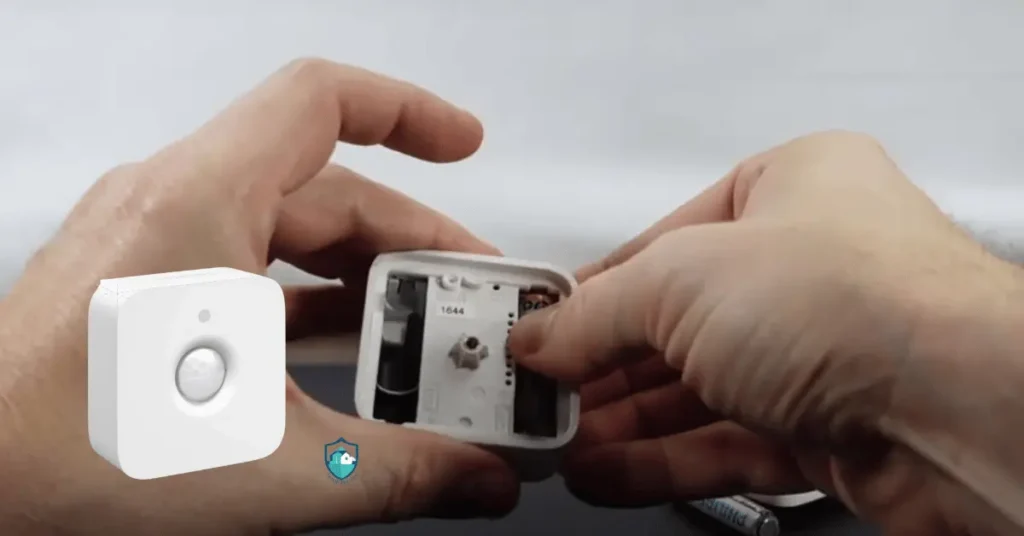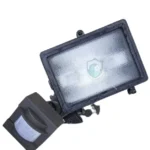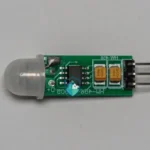Are you wondering what kind of hue motion sensor battery is your motion sensor using? Yes, the Philips Hue motion sensor has two batteries, AAA for indoor and AA for outdoor use.
After installing Hue motion sensors throughout my smart home, I was annoyed at constantly having to swap out dead batteries. These devices were supposed to make my life easier, not create more hassle!
But through trial and error combined with research, I’ve learned how to maximize my Hue sensors’ battery life.
In this ultimate guide, I will share everything I wish I knew earlier about Hue motion sensor batteries. I promise actionable tips to reduce low battery alerts and get the most out of each battery.
The Philips Hue lighting system allows you to control your home lighting through smartphone apps and voice assistants. It all starts with the Hue Bridge, which communicates with your wifi router to connect Hue lights and accessories.
One of the most popular Hue accessories are the motion sensors. These battery-powered sensors detect movement in a room and can automatically turn Hue lights on or off. They also measure temperature and ambient light levels.
The Hue motion sensors provide a ton of home automation possibilities. You can have lights turn on when you walk into a room, then turn off after you leave. Timers and light recipes can be triggered by motion detection to simulate occupancy. It’s a handy way to automate your lighting.
However, Hue motion sensors are powered solely by AAA batteries. While convenient for placement flexibility, batteries mean you’ll eventually deal with dead batteries and loss of function.
Based on claims from Signify, the company behind the Philips Hue brand, the motion sensor batteries should last around 2 years.
However, real world usage shows battery lifespan is highly variable depending on motion frequency, temperature, and battery brand. Some users report batteries lasting only 3-6 months.
Frequent battery replacement is frustrating. But there are ways to improve battery life through proper placement, settings adjustments, and battery selection. You can also create notifications for low batteries before dysfunction occurs.
In this ultimate guide, I will cover all aspects of Hue motion sensor batteries including:
- Expected versus real-world battery lifespan and the factors impacting longevity
- Step-by-step instructions for replacing dead batteries in your Hue motion sensors
- Tips to maximize battery life through motion sensitivity, placement, battery type, and software integrations
- How third-party sensors compare to Hue’s built-in battery performance
- Frequently asked questions about Hue motion sensor batteries
By the end, you’ll understand how to optimize your Hue sensor batteries for longer lifespans between replacements. You’ll spend less time swapping batteries and more time enjoying the benefits of automated motion-based lighting.
Let’s dive into the details on battery lifespan expectations and realities!
Battery Life in Hue Motion Sensors
According to official statements from Signify, the company behind Philips Hue, the expected battery life for the Hue motion sensors is 2 years.
This battery lifespan estimate is based on typical usecases and environments. Specifically, Philips conducted tests assuming an average of 10 triggers per day and a temperature of 25°C / 77°F.
However, Hue users’ real-world experiences reveal battery life can vary dramatically depending on several factors:
Motion Frequency
If a Hue motion sensor is placed in a high traffic area triggering constant activity, the battery will drain much faster than a sensor in a low use guest room for example.
Sensors mounted in hallways or entryways that activate lighting dozens of times per day will deplete batteries quicker than those with fewer motion events. High motion frequency keeps the sensor constantly awake and transmitting.
Temperature Fluctuation
The temperature where the Hue motion sensor is located impacts battery drain. Signify’s 2 year estimate assumes a consistent 77°F.
But batteries tend to perform poorly in very hot or very cold environments. Placing a motion sensor in an attic, garage or basement where temperatures vary widely shortens lifespan.
The Hue sensor specs state an operating range between -4°F to 131°F. But the closer to temperature extremes, the worse for battery efficiency.
Battery Brand
Not all AAA batteries are created equal when it comes to mAh capacity and rated cycles.
Hue owners report wide variances in lifespan using different AAA battery brands. Amazon Basics batteries may only last a few months, while Enegizer and lithium options can extend to 1 year+ in some cases.
Usage Habits
Your personal smart home habits also influence battery drain. Night owls who rely on Hue motion triggers into the late hours will exhaust batteries faster than early sleepers.
Homes that remain unoccupied for extended periods can stretch battery life by reducing motion activations. Frequent adjustments to motion sensitivity impact usage as well.
As batteries deplete, the first indication is usually the flashing red LED on the sensor itself. This low battery warning typically begins around 2.4V.
Once drained further, the sensor will cease triggering light automation and actions based on motion and temperature. The sensor may also disappear entirely from the Hue app.
Without a battery change, all functionality relying on motion detection and ambient light/temperature readings will fail. Any scenes, routines, or automation recipes will no longer work.
So while the estimated 2 year battery life might hold true in some ideal scenarios, many Hue users experience much shorter 1-6 month spans before needing fresh batteries.
How to Replace the Battery in a Hue Motion Sensor
Once your Hue motion sensor starts showing a low battery warning, you’ll need to replace it to restore full functionality. Replacing the battery requires a few simple tools and steps.
What You’ll Need
Before starting, make sure you have the following:
- New AAA batteries – I recommend Energizer or another long-lasting brand. Lithium batteries also perform well.
- Small Phillips head screwdriver – To open the sensor housing.
- Cloth – For wiping away dust/debris during battery swap.
Step 1 – Remove the Sensor from Mounting
Start by taking the motion sensor off the wall, ceiling or wherever it is mounted.
You’ll need to unscrew the mounting plate from the back of the sensor. Keep the mounting hardware nearby for reassembly later.
Step 2 – Open the Battery Compartment
On the rear of the motion sensor is a Phillips head screw holding the battery compartment closed.
Use your screwdriver to remove the screw and separate the plastic housing. Set the screw aside in a safe place.
Step 3 – Remove the Dead Battery
You should see the flat AAA battery inside the compartment. Note the polarity direction so you can insert the new battery correctly.
Gently pry or slide the old battery out of the compartment. Use a cloth to wipe away any corrosion or debris inside.
Step 4 – Insert the New Battery
With the positive (+) and negative (-) terminal aligned properly, insert the new AAA battery into the compartment.
Make sure the battery sits completely flush within the compartment. Double check the polarity before moving on!
Step 5 – Reassemble the Housing
With the fresh battery in place, reattach the two halves of the plastic housing. Replace the Phillips head screw and tighten it back into place.
Step 6 – Remount the Sensor
Screw the mounting plate back onto the rear of the motion sensor. Then mount the sensor in its original position on the wall or ceiling.
Step 7 – Pair with the Hue Bridge
The final step is to open the Philips Hue app and pair the sensor to your Hue bridge. This synchronizes the motion sensor and enables control again.
That’s all there is to it! With a new battery installed and paired to the bridge, your Hue motion sensor will be back at peak performance.
Maximizing Battery Life in Your Hue Motion Sensors
Replacing batteries frequently can be a nuisance. Luckily, there are some adjustments you can make to extend the lifespan of your Hue motion sensor batteries.
Reduce Motion Sensitivity
The motion sensors have adjustable sensitivity from low to high. Higher sensitivity triggers more easily from smaller movements.
Lowering the sensitivity means the radar chip draws less power listening for motion. This less frequent activation extends battery duration.
Find the right balance for each room. High traffic areas may need higher sensitivity, while low use guest rooms can be set lower.
Optimal Placement
As mentioned earlier, extreme cold and heat impact battery efficiency.
Ideally, place Hue motion sensors in interior rooms around 65°F to 75°F. Avoid uninsulated attics, garages, and basements prone to temperature swings.
Mounting location impacts frequency of motion triggers as well. Try to avoid tight spaces where the sensor’s field of view is frequently disrupted.
Use Premium Batteries
Battery brand makes a difference! While cheaper generics work, you’ll get longer life from premium options.
Energizer, Duracell, and Lithium batteries tend to have better longevity in Hue sensors. Rechargeable AAA batteries can be reused after recharging.
Buy in bulk for cost savings and convenience. Rotate batteries on a schedule before they fully deplete.
Create Low Battery Alerts
To avoid being caught off guard by dead batteries, set up notifications through your smart home platform.
Home Assistant, Hubitat and other ecosystems can monitor battery levels and send alerts when low. This gives you a heads up to swap batteries.
Built-in Limitations
Unfortunately, the built-in batteries limit options for extending lifespan. External power isn’t possible without a hardware mod.
Solar or USB-C charging would allow the motion sensors to operate without replaceable batteries. But these alternatives aren’t available from Hue directly.
Potential Workarounds
Some users have modified Hue sensors to add solar panels or external battery packs. But this requires dismantling the hardware.
There are also PoE to USB adapters that may work to power the sensor off Ethernet. But it’s an experimental approach.
Until better options exist, strategic placement, reducing motion sensitivity, and high-capacity batteries are your best bet for maximizing the built-in battery life.
Check The Battery Level Of Philips Hue Motion Sensor
To check the battery level of your Philips Hue Motion Sensor, you can use the Philips Hue app. The app will show you the battery level of the sensor. Additionally, you can reset the sensor by pressing the setup button for a few seconds. However, some users have reported that the battery level status always reports 100% in Hubitat. If you encounter this issue, you can try using the Philips Hue app to check the battery level.
Frequently Asked Questions
What Battery Does Hue Motion Sensor Take?
The Philips Hue motion sensor requires 1 AAA size battery. Both alkaline and lithium AAA batteries work.
Does Hue Motion Sensor Have A Battery?
Yes, the Hue motion sensor is powered entirely by an internal AAA battery. There is no AC power or USB charging option.
How Long Does Hue Motion Sensor Battery Last?
Official estimates say around 2 years, but real-world battery life is typically 1-6 months for most users before needing a replacement.
How Do I Change Battery On Hue Motion Sensor?
Use a Philips head screwdriver to open the compartment on the rear. Slide out the old AAA battery and insert a new one matching the polarity symbols.
Do Motion Sensors Run On Batteries?
Battery power is common for motion sensors to allow flexible wireless installation. Besides Hue, many third-party sensors use batteries as well.
How Many Years Do Philips Hue Last?
The Hue bulbs themselves can last 15,000-25,000 hours when used appropriately. But battery-powered accessories like the motion sensor last 1-2 years on average before requiring new batteries.
Is Hue Motion Sensor Worth It?
The Hue motion sensor provides unmatched integration with Hue lights. The convenience can be worth the cost despite the battery lifespan issues.
How Long Do Motion Sensor Batteries Last?
It varies based on usage, environment, and battery brand. Hue’s motion sensors average 6-12 months. Third-party sensors can last 2-5 years on a set of batteries.
What Are The Limitations Of Hue Motion Sensor?
Short battery life and lack of solar/USB charging are the main drawbacks. Sensitivity is adjustable but not to a very granular degree.
Can Philips Hue Motion Sensor Be Used Outside?
Yes, Philips sells a dedicated outdoor motion sensor. It has similar battery-related limitations as the indoor version.
What Is The Range Of Hue Outdoor Motion Sensor?
Hue states a 120° field of view and 16 foot range for the outdoor motion sensor. Performance depends on placement and environment.
Why Is Philips Discontinuing Hue?
Philips is not discontinuing the Hue line. They continue releasing new Hue products annually. Original Hue bulbs are discontinued due to LED advances.
Is Philips Hue Ending?
No, the Hue brand is alive and well. Philips continues investing in new Hue lighting and accessory innovations.
Do Hue Lights Use A Lot Of Electricity?
Hue smart bulbs use 80% less energy than traditional incandescent bulbs. Using Hue can lower electricity costs compared to standard bulbs.
How Often Should I Replace the Batteries of Philips Hue Motion Sensor?
Every 6-12 months is typical. Set up low battery notifications so you’re alerted before they die completely.
What Are Some Common Issues With Philips Hue Motion Sensor Batteries?
Frequent replacement needs, drained batteries without warning, and cold weather reducing lifespan are common complaints about the Hue motion sensor’s battery-reliant design.
Conclusion
The batteries in Philips Hue motion sensors can be a headache if lifespan is shorter than expected. With average battery life around 6-12 months, frequent replacements get annoying.
To maximize lifespan, use high-end batteries and optimize motion sensor placement and settings. Set up app notifications for low batteries before dysfunction occurs. Consider third-party motion sensors with impressive battery efficiency.
Take the steps outlined in this guide to reduce headaches from dead Hue motion sensor batteries. Careful setup and monitoring will keep your Hue motion automation running smoothly.




